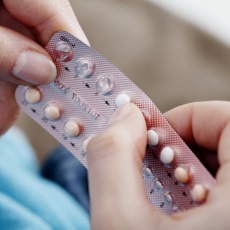
IMG via Global News
Some say that carbonation in water may limit hydration, reduce gastrointestinal symptoms, and increase satiety. But let’s think twice about those claims.
Regarding hydration, a randomized trial found no difference in urine volume after consumption of still water compared to sparkling water (1).
Regarding gastrointestinal health, a small (21 subjects) double-blind randomized trial found fewer symptoms of indigestion with carbonated water compared to tap water (2). Another double-blind study of 40 elderly people found fewer symptoms of constipation among people who consumed carbonated water compared to those who drank still water (3). One question about both of these studies is how blinding was accomplished, since subjects can sense carbonation. The small number of study subjects decreases confidence in each experiment.
It is also speculated that carbonated water can improve satiety, or sense of fullness. Two very small uncontrolled studies reported that people felt satiated after drinking carbonated water (4,5). But that might be the case for still water as well. There is also no good evidence that sparkling water can cause gas and bloating (6) and no evidence that it erodes tooth enamel, even though these symptoms have been reported anecdotally (7).
While experimental evidence from randomized controlled trials is required to determine the relative health benefits of still and sparkling water, it is a good option for hydration, particularly compared to sugary drinks.
References:
- Maughan RJ, Watson P, Cordery PA, et al. A randomized trial to assess the potential of different beverages to affect hydration status: development of a beverage hydration index. Am J Clin Nutr. 2016;103(3):717-723. doi:10.3945/ajcn.115.114769
- Cuomo R, Grasso R, Sarnelli G, et al. Effects of carbonated water on functional dyspepsia and constipation. Eur J Gastroenterol Hepatol. 2002;14(9):991-999. doi:10.1097/00042737-200209000-00010
- Mun JH, Jun SS. J Korean Acad Nurs. 2011;41(2):269-275. doi:10.4040/jkan.2011.41.2.269
- Suzuki M, Mura E, Taniguchi A, Moritani T, Nagai N. Oral Carbonation Attenuates Feeling of Hunger and Gastric Myoelectrical Activity in Young Women. J Nutr Sci Vitaminol (Tokyo). 2017;63(3):186-192. doi:10.3177/jnsv.63.186
- Wakisaka S, Nagai H, Mura E, Matsumoto T, Moritani T, Nagai N. The effects of carbonated water upon gastric and cardiac activities and fullness in healthy young women. J Nutr Sci Vitaminol (Tokyo). 2012;58(5):333-338. doi:10.3177/jnsv.58.333
- Welstead L, Schuchmann C. Is sparkling water good for you? What about hard water? University of Chicago Medicine. 10 May 2023.
- Parry J, Shaw L, Arnaud MJ, Smith AJ. Investigation of mineral waters and soft drinks in relation to dental erosion. J Oral Rehabil. 2001;28(8):766-772. doi:10.1046/j.1365-2842.2001.00795.x
- https://globalnews.ca/news/4286475/is-carbonated-water-good-for-you/

 Image by SG SHOT via Shutterstock
Image by SG SHOT via Shutterstock